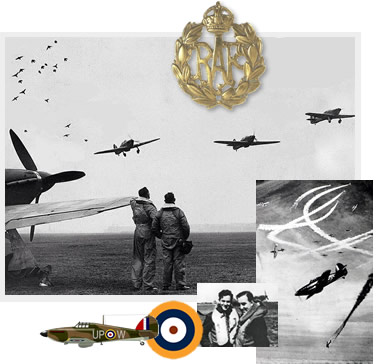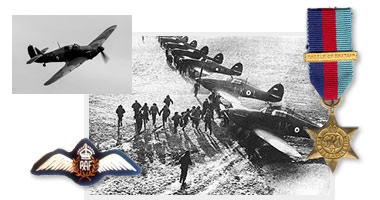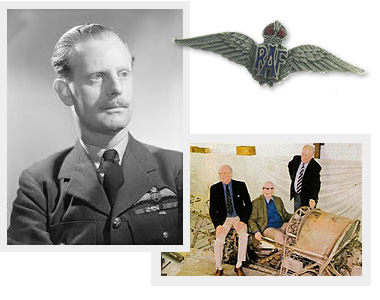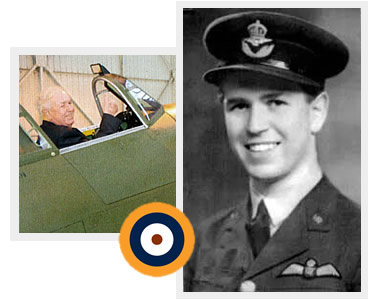

Said to be the most historic fighter aircraft to have survived the war, Hawker Hurricane Mk1 R4118 was delivered new to 605 (County of Warwick) Squadron at Drem on 17 August 1940. During the Battle of Britain it flew 49 sorties from Croydon and shot down five enemy aircraft.
After being battle damaged on 22 October 1940, the aircraft was rebuilt and taken on charge by 111 Squadron at Dyce on 18 January 1941. There it was flown on patrol over the North Sea and was again in combat. Over the following two years it was used primarily as a training aircraft with 59 and 56 OTUs, and was rebuilt a further three times following major accidents, including hitting a lorry on the runway and being stuffed into a snowbank!
In December 1943, R4118 was crated at Cardiff and shipped to India as a training aircraft. However it was never needed and remained in its packing case in Bombay until 1947 when it was struck off charge and donated to a university for engineering instruction. The fuselage was stood outside in a compound with the propeller, wings and tailplane laid on the ground. There it remained, exposed to the elements and ignored by the world, until 1996, when retired businessman and restoration enthusiast Peter Vacher began his remarkable quest to bring R4118 home.


Negotiations to bring R4118 back to the UK for restoration began in 1996, but the story begins 14 years earlier in March 1982.
Peter Vacher was travelling in India with a friend who was researching the fate of old Rolls-Royce and Bentley cars. Many years before, John recalled seeing two exceptional Rolls-Royce motorcars in the engineering department of Banaras Hindu University. After discovering the cars, Peter stepped outside and into an adjacent compound where he saw the remains of two aeroplanes, One was clearly a fighter – a Rolls-Royce Merlin engine was visible through the cowling – and they presumed it was a Spitfire. John took a photograph of Peter in the cockpit – and thought no more about it.
Years later, Peter showed the photograph to a friend, who immediately recognised the aircraft as not a Spitfire, but a much rarer Hurricane. Peter began to read up about the Hawker Hurricane and its place in the Battle of Britain, and so began his obsession to rebuild and restore the plane.
In June 2001, after six years of lengthy negotiations with the University and the Indian Air Force, the remains of R4118 were crated and shipped back to the UK for restoration.

Combat sorties flown by R4118 during WWII
Enemy aircraft shot down by R4118
Hurricanes operational during the Battle of Britain
Merlin III engines fitted during R4118's lifetime
Surviving Battle of Britain Hurricane airworthy today
Years of negotiations to bring the remains of R4118 back from India
Years to rebuild and restore R4118 to flying condition
Among the brilliant pilots who flew R4118 during its operational lifetime were two RAF aces, Christopher “Bunny” Currant and Bob Foster. Both are now sadly deceased but were reunited with the aircraft in 2004. They recorded their thoughts in the foreword to Peter Vacher’s 2005 book, Hurricane R4118:
“I flew this fighter aircraft almost daily for just short of three years, from December 1938 until August 1941… The Hurricane was a magnificent warhorse, with its unsurpassed gun platform in the leading-edge of the wings, which had a deadly promise. It had no vices whatsoever with superb reliability and was so easy to fly in any weather conditions. Totally trustworthy in every respect. A confidence-giving aeroplane, loved by all who flew it.”
Wing Commander Christopher Frederick “Bunny” Currant, DSO, DFC and Ba, CdeG
(1911-2006)
“Last year I sat in the cockpit of UP-W for the first time in nearly sixty-five years; the last time was the morning of 2 October 1940. It was all there as I remembered it… Many years have passed since then, and we now live in so-called peacful times. However, if one day you hear the distinct sound of a Merlin engine and, looking up, see good old UP-W flying overhead, raise your hand and say loud and clear, “Good luck, good flying and thank you.”
Wing Commander Bob Foster DSC
(1920-2014)


Hurricane Heritage runs flight operations from the beautiful and historic White Waltham Airfield.
The airfield has a long and illustrious history, dating back to 1935 when the de Havilland family acquired the land and formed the de Havilland School of Flying. Home to the Air Transport Auxiliary during the war, it's now a friendly and active aerodrome with great facilities.